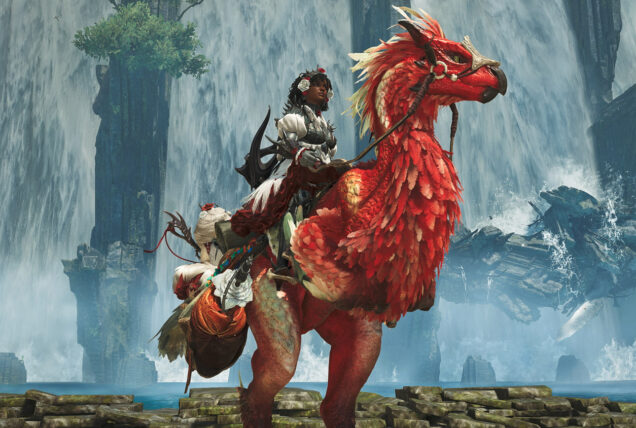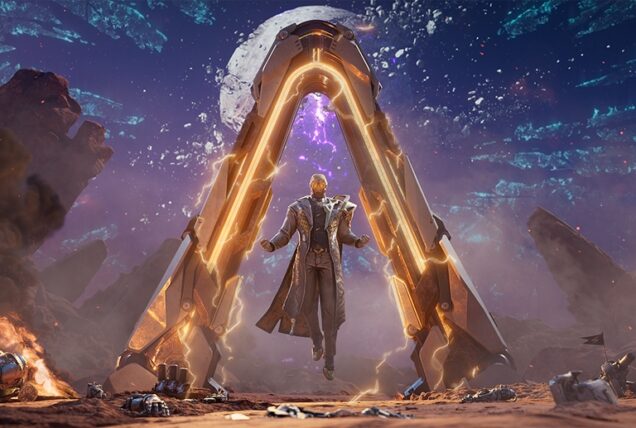
Hideki Hosoi has been with Capcom for 17 years, bringing a distinctive creative lens shaped by his background in performing arts. Before joining the company as a new graduate in 2008, he studied how to express live sound effects through dance, musicals, and theater—an unconventional foundation that continues to influence his approach to game audio. His early work included contributions to Monster Hunter 3 and Resident Evil 5: Alternative Edition, followed by a breakout role as sound director for Monster Hunter 4 in his third year at the company.
Since then, he has taken on dual roles as sound director and sound designer for Monster Hunter: World and Monster Hunter Wilds, where he led the creation of immersive environmental audio, monster sounds, and background music. Outside of work, he enjoys spending time with his family, walking through the city, reading manga outdoors, and playing VALORANT and Apex Legends.
How did you get started in the world of sound and music for video games? What are your responsibilities as a member of the sound & music team for Monster Hunter Wilds?
As the Sound Director for Monster Hunter Wilds, I’m in charge of overall sound supervision and production for the game, including player and spatial expression, as well as monster sound production and implementation.
I got into game sound design because I felt games offered the most freedom in sound effect production. Back when I started, it wasn’t possible to create the kind of rich sounds we can now, but that limitation actually made the process more exciting. Because of this, I saw it as a genre with the kind of freedom and tolerance I was looking for: where nearly everything—characters, environments, settings—had to be created from scratch, and there wasn’t a single “correct” answer. You could shape sounds based on what you found interesting, and that became the right choice.
Monster Hunter Wilds introduces a more seamless and immersive world than past titles. How did that evolution influence your approach to building its sonic identity—from musical motifs to ambient sound layers?
First and foremost, the biggest impact on environmental sound came from how we recorded and implemented it.
To create a seamless world in Wilds, we believed it was essential to balance two different qualities: a consistent listening experience and dynamic changes. To achieve this, we categorized environmental sounds into the following four types, each with its own recording and implementation approach:
- A consistent wind sound shared across all locales as a base level noise
- Breathing of creatures
- Ambient sounds that reflect the unique characteristics of each locale
- Sounds from physical objects like trees and stones present in the environment
For (1), we used a wind force system to express a dynamically changing world with a consistent tone, creating a sense of “connection.” We implemented this using only digital noise since it adapts well to dynamic changes.
For (2), we dynamically altered the breathing sounds of creatures based on time of day, weather, and altitude to express a living world. To ensure spatial positioning and distance came through clearly, we used highly directional microphones to isolate the breathing of the target creatures.
Since (3) adds character to each locale, we focused on sound design to give these ambient sounds interesting and distinctive features.
To give the in-game world a sense of depth with (4), we used directional microphones to record specific sounds, like rustling leaves, with precision. We then connected those recordings to the wind force system for in-game control.
By breaking down environmental sound into these components, we created a wide range of expressive variations.
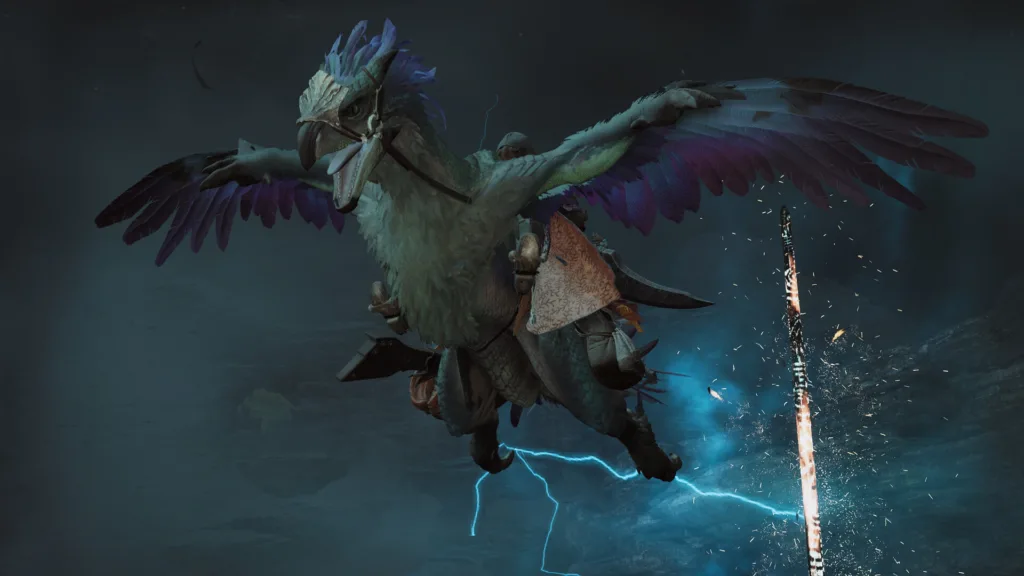
In Wilds, we carefully considered which sounds players would actually want to hear?
We believe background music (BGM) plays a crucial role in expressing the monsters in Wilds. While BGM serves as a foundational element, we also needed to balance it with other key audio components—such as hit sounds during gameplay, the dynamic monster sounds from the enemies, and dialogue that adds depth to the story. To manage this, we introduced a prioritization system for each sound element.
For example:
- We distinguish whether hit sounds come from your own attack or someone else’s.
- We separate minor monster movement noises from more important cues like roars or attack warnings.
- We divide dialogue into casual chatter and lines that convey situational context.
We built a system that reduces or suppresses sounds within each category based on their priority. For instance, when multiple monsters are present and their combined sounds exceed a certain volume threshold, we suppress lower priority sounds like subtle movements or footsteps. This makes it easier for players to hear important cues, such as monster’s growl before an attack.
Instead of applying broad-stroke ducking (volume reduction), we designed a finely tuned system where ducking triggers vary by sound type. This gives us more precise and expressive control over the audio experience.
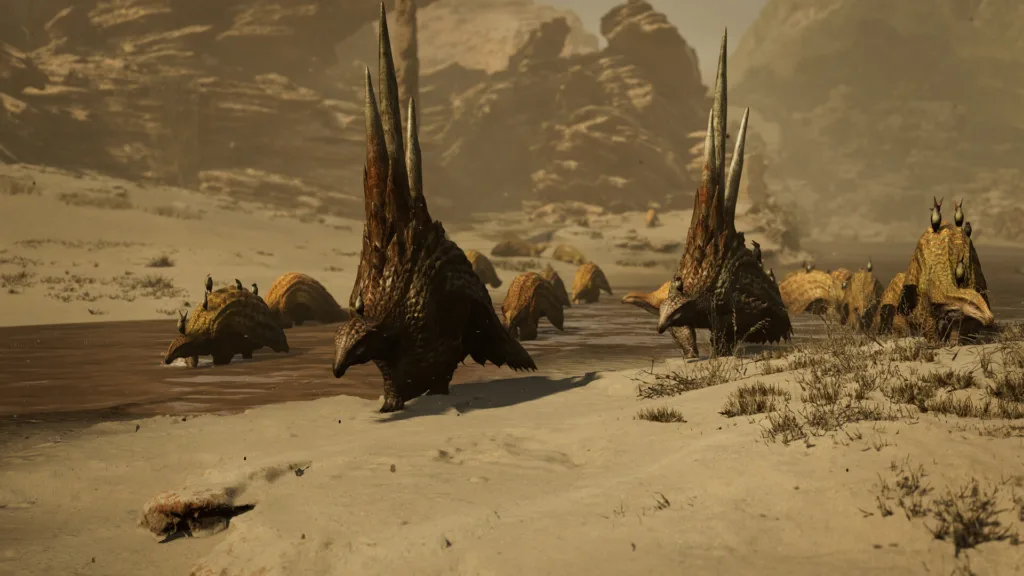
During development, the team turned to nature documentaries for creative inspiration. How did this influence the realism, pacing, or emotional tone of Wilds‘ soundscapes?
The duality of monster voices (adding nuances to voices depending on the degree of excitement)
While watching nature documentaries, I noticed that animals living in harsh natural environments aren’t constantly aggressive or excited.
The same goes for their vocalizations. Even a single bark can vary depending on the animal’s condition—whether it’s a strong animal barking at a weaker one, or a hungry or injured animal barking at a stronger opponent. So, in the game, we focused on the monster’s “anger” state and designed their voices to shift between normal and angry.
During combat, depending on how intense a monster’s anger is, the same action can produce a very different sound. In a normal state, a monster might growl with a relaxed “grr grr grr,” while in an angry state, it might roar with a sharp “gyao gyao!” By emphasizing that difference in tension, we aimed to express the dual nature of living creatures.
Predicting environmental changes (environmental creatures and sounds like birds)
Another major influence was the way creatures in nature remain highly alert to environmental changes and danger.
They constantly listen to the sounds around them to gather information and survive. We wanted to reflect this in the game, so we designed the sounds of birds and small animals in each locale to become inaudible several hours before inclement weather occurs.
There’s a noticeable difference between how humans and non-human creatures perceive environmental changes. To better express the ecology of wildlife, we introduced time lags in awareness where the environment changes first, creatures react next, and then humans respond afterward.
Were there any new tools, pipelines, or audio middleware innovations you used to support the scale and detail of Wilds? How did these impact your creative workflow?
As with Monster Hunter World, we used Wwise for audio middleware. But for Monster Hunter Wilds, we also used Wwise SoundSeedAir as the base noise to express the sound of the wind.
By combining live and digital audio sources, we created soundscapes that felt varied while still maintaining a strong sense of realism.
To handle the large volume of dialogue, we used NUGEN Audio’s AMB software along with our proprietary tools to automatically adjust multiple languages, using English as a reference point. For sound effects tied to animation, we divided the production process into three distinct phases and built a workflow that changed the implementation method in each stage.
In Phase 1, we established a quality baseline focused on ensuring a playable game experience. To streamline production, we avoided updating sound effects every time an animation changed by implementing a system that automatically played sound effects.
In Phase 2, we applied both automatic playback and manual sound design to finalized animations.
In Phase 3, we refined the audio through gameplay balancing by trimming unnecessary sound effects.
This phased approach allowed us to steadily improve both the efficiency and the quality of sound implementation.
With richly layered environmental audio and dynamic music, how do you strike the right balance so that each sound—whether it’s ambient, musical, or vocal—complements rather than competes?
In Monster Hunter, both music and environmental sound play critically important roles. First, we hold thorough discussions with all team members to determine the ideal role music should play within the game—considering factors like volume, spatial distance, and how sound is expressed in the environment. From the recording location to mixing and final mastering, we carefully plan and execute every step to achieve that vision.
Environmental sound is just as vital. We collaborate closely with the teams creating these sounds to establish optimal volume levels and a convincing sense of distance.
These elements can potentially clash, but we don’t approach sound design by simply trying to avoid interference. Instead, we design each sound to occupy a wide frequency range, creating a dynamic listening experience.
Music moves players emotionally and heightens excitement, while environmental sound builds immersion, helping players feel truly present in the game world.
Our top priority is to clearly define the role of each sound element and determine the best range for its expression. Then we apply techniques like ducking and sound prioritization to make sure each element fulfills its role appropriately, depending on gameplay. We use this approach not just for music and environmental sound but across all in-game audio.
What matters most is envisioning the final polished audio experience clearly, preparing accordingly, and fostering an environment where the entire team shares that vision.
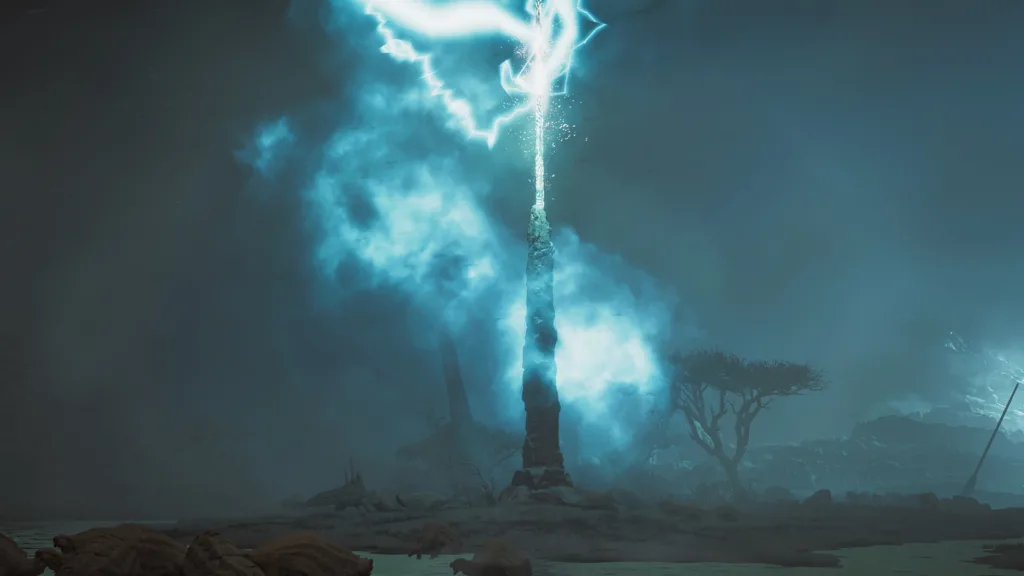
How does the team incorporate community feedback into audio development—either from past Monster Hunter titles or during playtesting of Wilds?
Based on feedback from playtesting, we adjusted the hit sound effects.
In the Monster Hunter series, hit sounds vary depending on how hard a monster’s body is and the sharpness of the weapon. When we strictly followed these parameters, the early stages of the game often featured dull, unsatisfying hit sounds. During playtesting, the initial design reflected a sense of exhilaration only when the weapon’s power exceeded the monster’s defense, relying purely on parameter-based variation. However, after observing user reactions, we revised our approach for the final version to ensure hits feel impactful and satisfying—even early in the game.
While not direct feedback, we’ve also recognized that games today are enjoyed both by playing and watching. Because of this, we now consider how the game feels from a viewer’s perspective as well. It’s important to balance sounds that feel good to play with and sounds that are satisfying to watch and listen to as video content.
Is there a particular piece, moment, or design element in Monster Hunter Wilds’ audio that you’re especially proud of? Looking ahead, what’s something you hope to innovate on in future projects?
When it comes to sound effects in Wilds, I believe the monster sounds are the most defining element as they express the individuality of each monster.
That said, much of our current sound design still draws inspiration from classic film sound effects. Looking forward, I hope that the monster sounds in Wilds will set the new standard for how monsters are portrayed across entertainment.
As a Capcom title, we aim to balance commercial value—giving players a sense of familiarity and meeting their expectations—with creative value, delivering something unique. As a sound team, we want to keep crafting game audio that achieves both of these goals.

